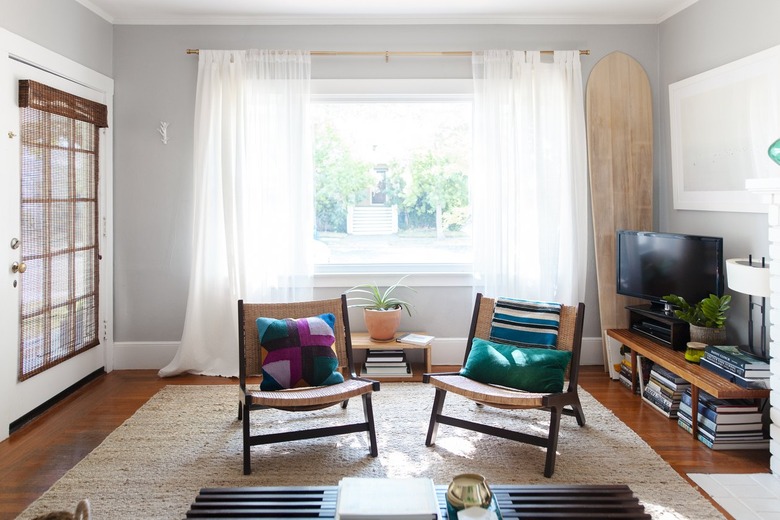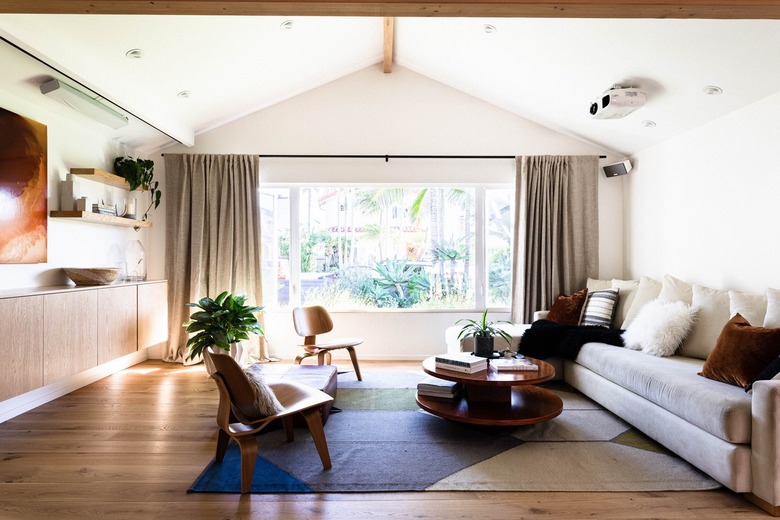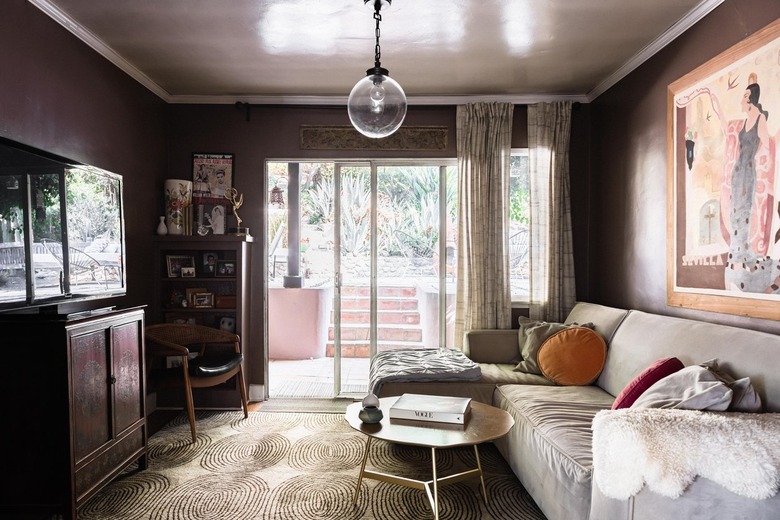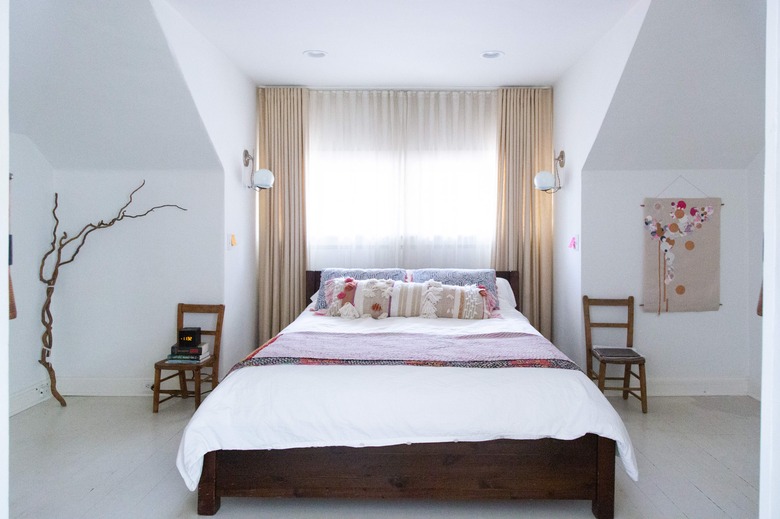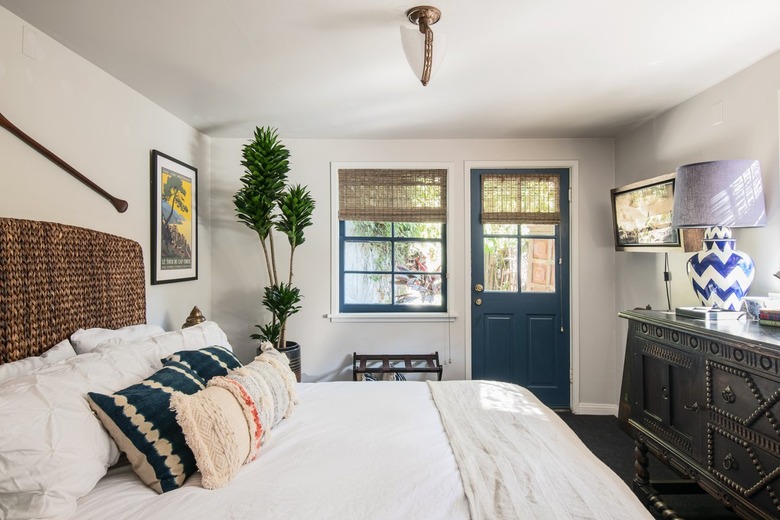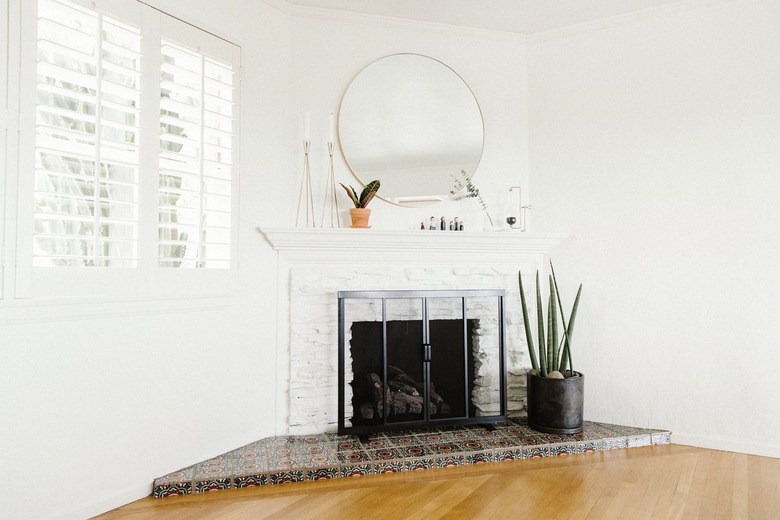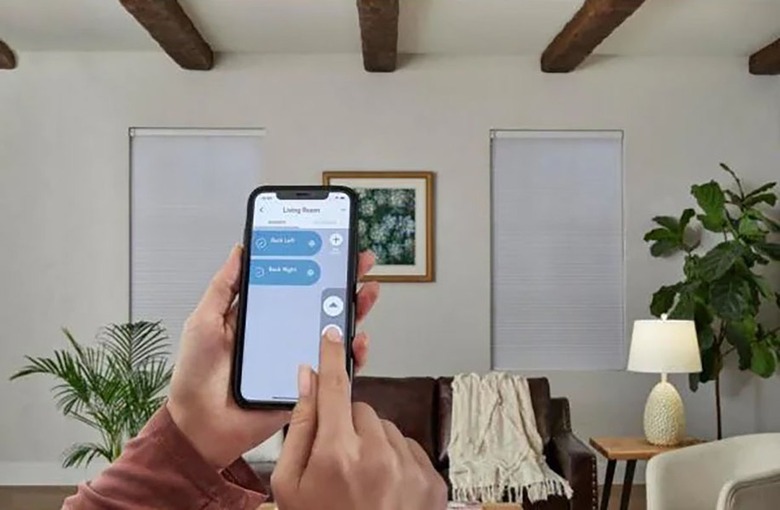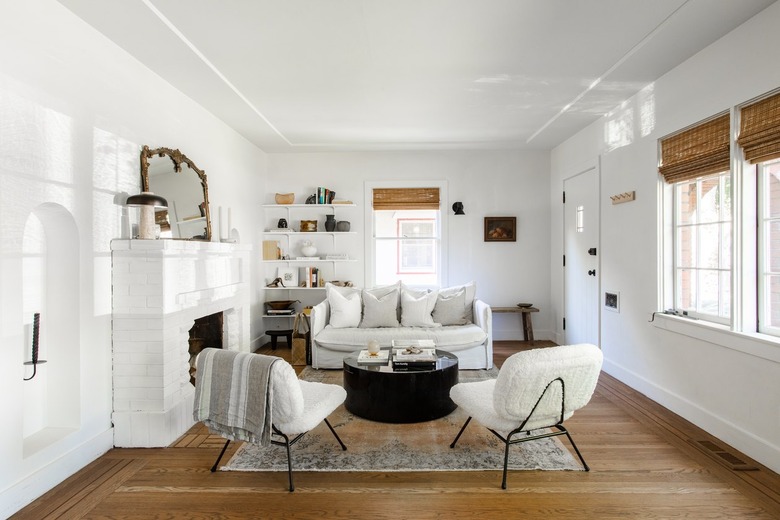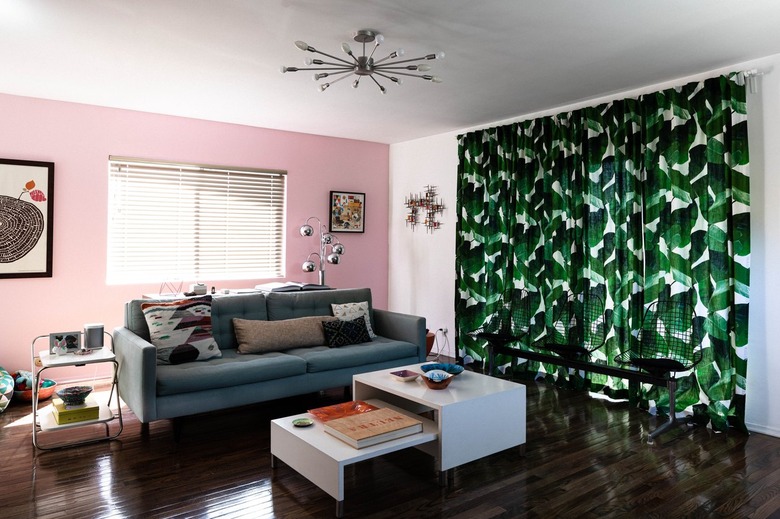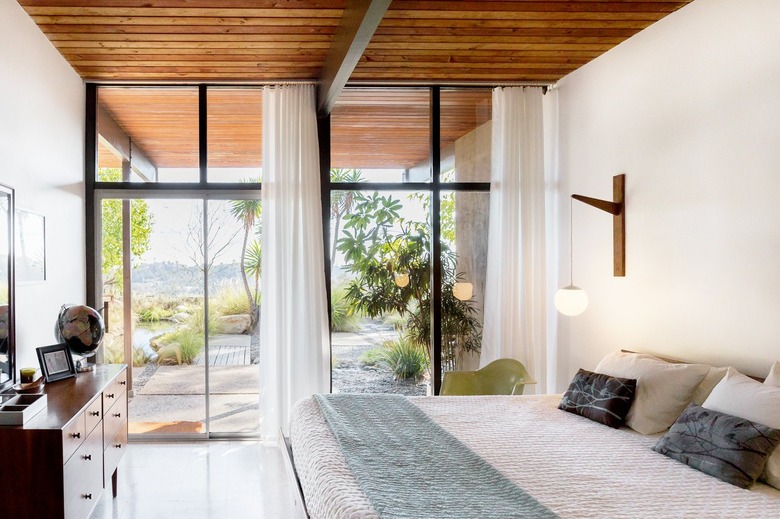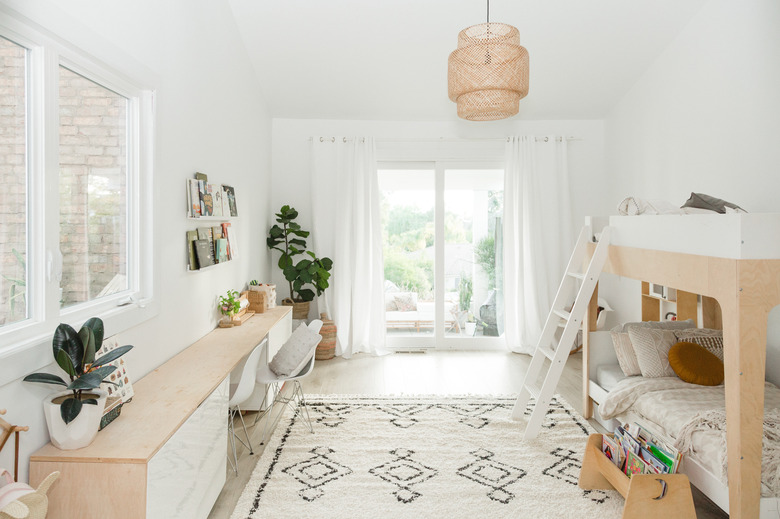The Do's And Don'ts Of Choosing The Right Window Treatments
We may receive a commission on purchases made from links.
Choosing the right window treatments is sometimes tricky. You need to marry form and function, taking into account both the aesthetics and how you use the room. A sheer curtain may look amazing in the large windows in your living room, for example, but it might fall short of blocking the glare when you want to watch TV.
With so many options from which to choose, it's helpful to know a few window covering do's and don'ts before you start measuring for curtains or blinds.
Do Think Practically
Do Think Practically
Though it's easy to be persuaded by a pretty pattern or a motorized window shade, it's important to analyze whether or not the window treatment is going to be practical for the room you're shopping for. For example, if you have kids or pets, corded Venetian blinds and elegant draperies that puddle on the floor probably aren't the best choices.
You need to think about how you use your space as well. Blackout curtains may work well in a bedroom you want to keep dark but will be too much for your kitchen window. A heavy drapery may work well in a formal dining room you don't use often, but opt for blinds or curtains that are easy to open and close in your living room. Blinds and curtains you use frequently should also be easy to clean.
Don't Make Every Room the Same
Don't Make Every Room the Same
If you have two windows in your bedroom, you'll clearly want them to mirror each other. But don't feel like you have to use the same window treatment everywhere in your home decor. If a lack of continuity from room to room bothers you, you can go with a theme. For instance, perhaps you will choose natural materials and fibers throughout your home, or maybe you'll decide to use a similar color scheme on all your windows.
Beyond just mixing it up, using the same type of window treatment might not work or every room. Key example: A delicate sheer curtain in the bedroom won't hold up to the grease of the kitchen or the grime and moisture of the bathroom.
Do Go High and Wide
Do Go High and Wide
If you've been shopping for window treatment already, you may have likely encountered this piece of advice several times: If you hang drapes or Roman shades outside the window frame, you can make your windows look bigger than they are. This creates a nice, airy feeling in the room and lets you open your curtains without blocking any of the window.
Ideally, you should hang your curtains 12 inches above the top of the window frame and 3 to 6 inches beyond the side of the window frame. If you choose to do this, remember to add these dimensions to your measurements. You'll need a little more fabric to cover the window when the drapes are closed if you extend the curtain.
Don't Assume It's Close Enough When Measuring
Don't Assume It's Close Enough When Measuring
Sometimes, close enough is, well, close enough. This is absolutely not the case when measuring for drapes and blinds. The measuring process is slightly more forgiving if you want curtains that hang outside your window frame. Being off by even 1/8 of an inch, however, can prevent inside-mount blinds from fitting into the window frame.
If you're working with a local window treatment company, they're often more than willing to send a professional to measure the window for you. If you're ordering online or from a distant manufacturer, you need to take precise measurements. Don't account for the space the blind or drapery hardware will consume. They will take all of that into account. Simply give them your accurate window dimensions, and they'll do the rest.
Do Consider Layered Window Treatments
Do Consider Layered Window Treatments
Layering your window treatments is attractive and practical. You may, for instance, want to hang drapes over a window with a blind. This gives you the privacy of the blind but with a softer look. Hanging a valance over your curtains can add a charming and sophisticated touch that makes the window look more finished and polished.
A traditional layered approach is to use sheers and then add a heavier, darker drape. This works well if you want to enjoy natural light often but still have light filtering ability when it causes glare. Layering also allows you to easily incorporate multiple colors into your window treatment.
Don't Shy Away From Experimenting
Don't Shy Away From Experimenting
Some people are incredibly good at picturing what their finished window coverings will look like. The rest of us, however, often need to see the finished product with our own eyes to decide if we truly like it or not. If you're part of the latter group, feel free to experiment with different setups.
Obviously, it's not practical or cost effective to buy one of everything in the store and then test it at home. Thankfully, modern technology means you don't have to do that. There are many websites and apps — specifically Wayfair's "View in Room" and Target's "See it In Your Space" app features — that let you take a picture of your room and then see exactly how it will look with certain window treatment products.
Do Consider Energy Efficiency
Do Consider Energy Efficiency
Blinds and drapes can help you with energy efficiency in two ways. For one, they can block out the sun on hot summer days. This helps your air conditioner breathe a little easier as it cools your space. Drapes can also block drafts and reduce the amount of heat that escapes your home during the winter months.
Heavy, thick drapes are good at blocking drafts, but you don't necessarily have to choose them if you prefer a lighter look for your window treatments. Roman shades, honeycomb blinds, roller shades, and shutters all work well as draft blockers without feeling heavy or excessive. If you're concerned that a thick curtain will overwhelm the room but you want to save heat, one of these blinds is the way to go.
Don't Ignore the Bells and Whistles
Don't Ignore the Bells and Whistles
Let's pretend you're sitting in your favorite easy chair enjoying a book. Suddenly, you notice that the sun has changed positions and is now shining right into your eyes. If your new blinds came with a remote control, you could simply close them without leaving your chair or losing your place in your book.
Motorized blinds or cellular shades are also cordless, so you don't have to worry about them becoming a tangle or choking risk for children or pets. Motorized blinds are also handy in hard-to-reach places. If your couch sits in front of your window, a motorized blind lets you close the blinds without crawling over the furniture.
Some blinds are even more tech savvy. You can now purchase window blinds that are compatible with Alexa, Google, and other home automation hubs. Many also let you program a timer so that your blinds will automatically open and close for the most energy efficiency as the sun moves across the sky throughout the day.
Do Shuffle Your Budget
Do Shuffle Your Budget
If you've recently moved into or built a new home, you probably need to get quite a few window treatments throughout the house. When doing so, don't just divide your budget by the number of windows. Instead, consider which spaces are more important and use the bulk of your budget there.
You may, for example, hang inexpensive blinds in your children's playroom so you can invest more in your living room window treatments. This makes sense for a few reasons. One is that you probably spend more time in your living room than your kids' playroom, so it's important to choose a window treatment you like. Your guests are also more likely to see your living room than your playroom. Lastly, it's less of an issue to replace inexpensive window treatments when one of your kids inevitably colors on them or bends them.
Don't Fear Color
Don't Fear Color
Yes, there's something to be said about neutral drapes that go with anything, but sometimes, a pop of color is just what is needed to tie the room together. Whether you're considering complementary or even contrasting colors for your windows, don't be afraid to think outside the neutral color palette.
Do Consider Your Curtain Rod
Do Consider Your Curtain Rod
Depending on the window treatment configuration you choose, your curtain rod may be highly visible, and it's important to remember this when selecting your curtain hardware. If you're hanging very simple curtains, you may wish to choose a rod that has highly complex finial decorations on each end to add some visual interest. But if your curtain panel has a bold pattern or highly visible texture, it may look better if you keep your curtain rod low key rather than super decorative.
If you don't like seeing your curtain rod at all or if you have less-than-attractive window blind hardware you want to hide, consider a valance or a cornice. Both of these decorative elements hang across the top of the entire window and are terrific for hiding things you don't wish to see. As is true with finials, it's usually best to keep valances and cornices simple if your window treatments are patterned and use them to add a little pop if your window treatments are plain.
Don't Forget to Check the Care Requirements
Don't Forget to Check the Care Requirements
Unless you opt for blinds that are completely encased within the window itself, you'll need to choose window treatments you can easily keep clean. Blinds and shutters made of wood, vinyl, plastic, or similar materials can be easily wiped down with a dust cloth. Fabric blinds can be a little tougher and may require that you vacuum them with your brush attachment.
If you're hanging curtains or drapes, look for fabrics you can take down and throw into the washing machine. You can expand your fabric choices if you don't mind fabrics that need dry cleaning or steam cleaning, but keep in mind that these require more work. Practicality is a consideration. You probably want easily wiped-down blinds in a greasy kitchen rather than a fabric Roman shade.
References
- Bloomin' Blinds: Improve Your Energy Efficiency With Motorized Treatments
- Bloomin' Blinds: The Do's and Don'ts of Choosing Window Treatments
- Camille Styles: The Do's and Don't's of Buying Window Treatments — and Our Own Curtain Reveal!
- Centurian Window Fashions: Simple Dos and Don'ts of Eye-Catching Window Treatments
